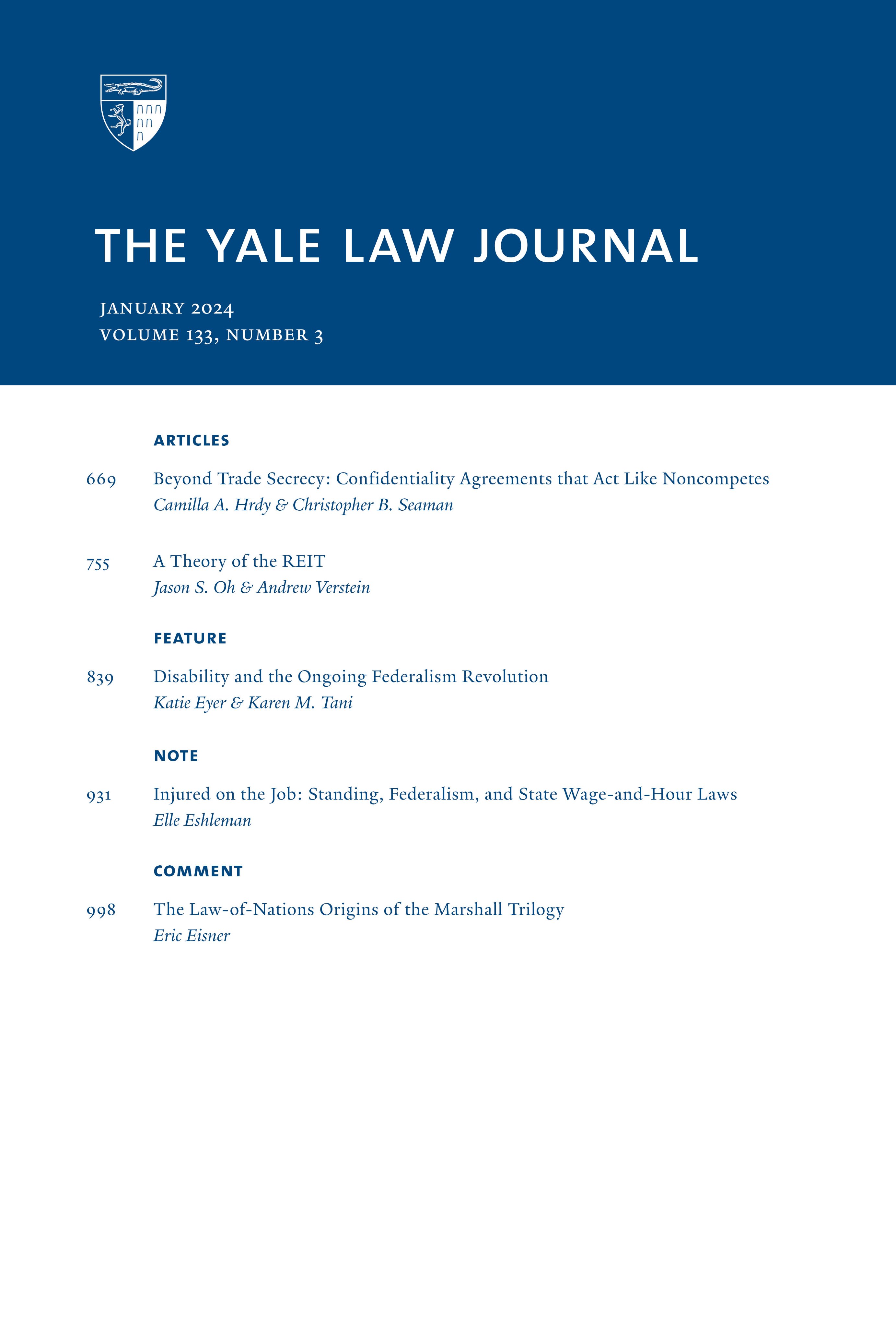法定三权分立
IF 5.2
1区 社会学
Q1 LAW
引用次数: 4
摘要
三权分立是我们宪政民主的支柱。但在非宪法领域,这也是一个指导原则。本文认为,国会通过其对行政机构的授权,构建了分离、制衡的法定方案。这种法定的权力分立可以从同时立法创建独立的联邦能源管理委员会(FERC)和执行部门能源部(DOE)中清楚地看到。与宪法上的三权分立一样,法定的三权分立旨在防止派系统治并创造政策稳定。但是,分离和平衡法定权力是一件微妙的事情,容易受到不精确分配、不平衡的强化和不频繁调整的挑战。FERC和DOE之间的关系表明了这些挑战,这使得DOE在追求政策主导地位的过程中可以将法定制衡武器化。文章最后对国会、司法机构和机构本身如何缓解这些趋势提出了建议,并保留了法定的三权分立,作为对集中决策权危险的有意义的保障。本文章由计算机程序翻译,如有差异,请以英文原文为准。
The Statutory Separation of Powers
The separation of powers forms the backbone of our constitutional democracy. But it is also a guiding principle in sub-constitutional domains. This Article argues that Congress constructs statutory schemes of separation, checks, and balances through its delegations to administrative agencies. This statutory separation of powers may be seen clearly in the simultaneous legislative creation of the independent Federal Energy Regulatory Commission (FERC) and the executive Department of Energy (DOE). Like its constitutional counterpart, the statutory separation of powers seeks to prevent the dominance of faction and create policy stability. But separating and balancing statutory authority is a delicate business subject to challenges of imprecise allocation, lopsided aggrandizement, and infrequent adjustment. The relationship between FERC and the DOE demonstrates these challenges, which have allowed the DOE to weaponize statutory checks and balances in its pursuit of policy dominance. The article concludes with recommendations for how Congress, the judiciary, and agencies themselves might mitigate these tendencies and preserve the statutory separation of powers as a meaningful safeguard against the perils of concentrated policymaking authority.
求助全文
通过发布文献求助,成功后即可免费获取论文全文。
去求助
来源期刊

Yale Law Journal
LAW-
CiteScore
4.50
自引率
6.20%
发文量
0
期刊介绍:
The Yale Law Journal Online is the online companion to The Yale Law Journal. It replaces The Pocket Part, which was the first such companion to be published by a leading law review. YLJ Online will continue The Pocket Part"s mission of augmenting the scholarship printed in The Yale Law Journal by providing original Essays, legal commentaries, responses to articles printed in the Journal, podcast and iTunes University recordings of various pieces, and other works by both established and emerging academics and practitioners.
 求助内容:
求助内容: 应助结果提醒方式:
应助结果提醒方式:


